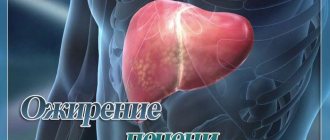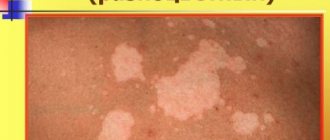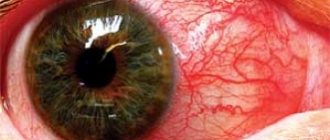Taeniasis is a parasitic disease caused by pork tapeworm, which is a flatworm. The disease is characterized by impaired functioning of the gastrointestinal tract.
The disease is caused by the pork tapeworm (also called the unarmed tapeworm - Taenia solium), which penetrates the human body. The parasite in appearance resembles a long ribbon, has suckers and a proboscis with chitinous hooks. The length of an adult is approximately 3-4 meters.
The final host of the parasite (as in the photo) is a person whose intestines are parasitized by a mature worm. The intermediate host is a pig, less often a cat, a dog, or a wild pig.
In animal organisms, fins, that is, parasite larvae, are formed from oncospheres. The disease is caused precisely by the parasitic activity of helminth larvae.
Human infection occurs when eating raw or poorly cooked, fried meat, which contains worm larvae. Sometimes infection occurs through dirty hands or water that is contaminated with cysticerci.
At the same time, the patient is infectious to others. The only difference is that it will infect other people not with taeniasis, but with the larval stage of tapeworm, and the disease is called cysticercosis.
So, knowing what taeniosis is, it is necessary to consider what symptoms indicate that a parasitic pathogen has entered the human body. And also find out what treatment is prescribed for taeniosis?
Who is the causative agent of the disease?
Who is the causative agent of taeniasis? The cause of infection in the body is the penetration of pork tapeworm. The parasitic tapeworm consists of a head, neck and body. There are suction cups and hooks on the head, which allows the parasite to attach to the intestinal walls. On the body of the helminth there are segments with eggs.
From the intestines of the final host, the parasite eggs fall onto the ground, and then, along with food during eating, into the body of pigs. After the eggs enter the intestinal environment, they disintegrate into larvae, which are carried throughout the body through the circulatory system and then settle in the muscles.
For reference! A person can also act as an intermediate “home” for the larvae, in which case the disease acquires a new type – cysticercosis. This condition carries more dangers than a simple parasitic worm living independently in the body.
While in the animal’s body, the larvae live their own lives and actively develop. After just a couple of months, they turn into bubbles with the heads of worms. Parasites can actively develop in the intestines of an animal for up to 6 years. Then spontaneous death of the fetus occurs.
Description of the disease
Taeniasis is a parasitic intestinal infection caused by adult pork tapeworms. When a pest enters the body, it primarily has a negative effect on the functioning of the gastrointestinal tract.
Based on the name of the helminth, it becomes clear that pigs are its intermediate host.
In addition, carriers of this type of worms can be:
- Rabbits.
- Camels.
- Dogs.
In most cases, infection occurs in adults, but children also sometimes experience cases of infection - 5–7% of all infected people.
Clinical picture
After infection of the human body with bovine tapeworm, the larvae mature in the small intestine. They firmly adhere to the inner wall and continue to actively develop for 3 months. During this period, the disease does not show itself at all, there are no symptoms at all.
Important! Teniosis is usually difficult to treat and takes a long time. Therefore, it is not recommended to self-medicate. Consult a qualified professional for assistance. The doctor will conduct laboratory diagnostics and make the correct diagnosis.
Various signs may indicate the presence of bovine tapeworm infection:
- Intestinal disorder.
- Vomiting and nausea.
- Severe and regular abdominal pain.
- Frequent headaches and insomnia.
- General weakness of the body.
- Anemia of the body.
Diagnosis of taeniosis must be carried out necessarily. For some, the disease is not accompanied by any symptoms. Only through examination can a parasite be detected in the intestines.
Children's symptoms
Teniasis is popularly called a disease caused by a bovine tapeworm. Diagnosis of infection in a small child is carried out earlier than in an adult, since the child’s body reacts faster to the presence of parasites. When taeniasis occurs, a child experiences the following symptoms:
- Insomnia.
- Headache.
- Decreased appetite and rapid weight loss.
- Itching and rash on the skin.
Therefore, prevention of taeniasis is of great importance. Try to choose only fresh meat, and it must be properly processed before consumption.
Adult symptoms
The symptoms of an adult are practically no different from those of a child. The only thing worth noting is that the disease begins to manifest itself much later. Many begin to notice a strange pattern - appetite increases, but body weight decreases. This fact should also be alarming.
It is important to know! When the body is infected with a bovine tapeworm, complete intoxication occurs. In case of taeniasis, treatment should be carried out urgently. If you neglect this rule, serious complications of taeniasis may begin, including mental disorders.
To get rid of the parasite in the body, it is necessary to undergo medical examination. Dispensary treatment is carried out after diagnosis. During the period of infection, the patient experiences intracranial pressure, depression, hallucinations, panic attacks and various types of mental abnormalities. When turning the head, the patient feels severe pain and increased heart rate.
Diagnosis of taeniasis
A carefully collected history and patient complaints allow one to suspect taeniasis; a final diagnosis is possible only with laboratory confirmation.
The subjects to be examined are pieces of feces, scrapings from the perianal area, or an imprint of the anal ring on a special adhesive transparent tape.
Coproscopic examination can reveal eggs of the parasite, but it cannot be said that the patient has taeniasis, since eggs of exactly the same structure are secreted by another helminth that causes taeniahrynchiasis - bovine tapeworm. During a scatological examination, it is possible to distinguish one pathogen from another only when segments of the worm are detected in the feces; the segments of the pork tapeworm have 10-12 uterine branches on the sides; the bovine tapeworm has more branches, 24-32, which are clearly visible under microscopy.
To diagnose taeniasis, stool examination often has to be repeated many times, because eggs are released irregularly, and accordingly, their content in stool can vary from a few to a huge number.
The patient may report the excretion of segments with feces, otherwise called proglottids or metameres; they come out singly or in a chain of up to six pieces, visible to the naked eye. The segments of the pork tapeworm lack mobility, while the metameres of the bovine tapeworm are capable of contracting in waves and moving quite actively, which also helps to distinguish taeniasis from taeniarynchosis.
Immunological methods help to diagnose taeniasis; the most effective is an enzyme-linked immunosorbent assay based on specialized test systems that detect pork tapeworm antigens in the patient’s feces and blood. Another method that is highly effective is immunoelectrophoresis, which allows one to detect antibodies to the parasite antigen. However, in these studies, cross-reactions with antigens of other helminths are often observed, which makes accurate diagnosis difficult and sometimes impossible.
Taeniasis complicated by cysticercosis is extremely difficult to diagnose. An encapsulated larva can be detected in the brain with computed tomography, or in the eyeball with ophthalmoscopy, but the diagnosis will only be presumptive. A biopsy provides valuable information, but taking a piece from damaged tissue is only possible if there is parasitism in the skin.
Diagnostic measures
To establish a diagnosis of taeniasis, it is necessary to conduct a laboratory analysis. Specialists will conduct a stool test for worm eggs. They usually come for the test in the morning. To confirm the results of the study, it is advisable to repeat the analysis several times. The result is considered correct if parasite eggs are found in the sample. Values are considered negative if no signs of helminthiasis were found in any sample.
Then a differential test is carried out. To do this, the found samples are studied under magnification. Diagnostic measures of the disease require complex treatment. The patient is prescribed the following techniques: MRI, CT, ultrasound and craniography.
On a note! In case of taeniasis, the patient must undergo a full examination to identify a mature helminth in the body. This must be done to avoid autoinvasion.
Etiology
The pathogen enters the human body through the fecal-oral (almentary) route.
The main causes of taeniasis:
- Eating poorly cooked, fried pork, in the meat of which the bulk of the “uninvited guests” cysts are concentrated.
- Violation of sanitary and hygienic standards for preparing pork dishes.
Ways of infection with helminthiasis:
- food;
- water.
Most often, infection occurs when eating pork that has undergone insufficient heat treatment.
How to get rid of the disease?
Getting rid of a parasitic worm from the body is very simple with the help of special medications. The incubation period lasts until the pathogen reaches a certain stage and leaves the body on its own.
Praziquantel
The drug can cause paralysis of the parasite's muscles and destruction of its protective shell. This only happens when high dosages of the drug are used.
The drug is available in tablet form in a dosage of 0.6 grams. The tablets are contained in a dark glass bottle. The dragee is covered with a coating that dissolves in the intestines. It is prohibited to chew the tablets while taking them!
Prevention of infection is possible. But if the parasite does enter the body, then treatment is inevitable. For pathology, 10-25 mg per 1 kg of patient weight is prescribed. 2 hours after taking the medicine, you need to drink a laxative to remove surviving helminth segments from the intestines. If necessary, the course of treatment can be extended.
It is prohibited to take the medication:
- during pregnancy and lactation;
- children under 3 years old;
- for liver diseases;
- in case of individual intolerance to a component included in the medicine;
- for eye diseases.
While taking the drug, the patient may experience side effects. The patient may experience severe abdominal pain, persistent headaches, diarrhea, and vomiting. You can get rid of side effects by administering intramuscular or intravenous injections.
Niclosamide
Niclosamide can disrupt the absorption of nutritional enzymes into the body of the helminth. Ultimately, all these manipulations lead to the death of the worm. The drug is produced in the form of tablets. Niclosamide is prescribed for taeniasis, teniarynchosis, and diphyllobothriasis.
The course of treatment lasts about a week. If necessary, treatment therapy is extended. It is advisable to crush the tablet before use. This medicine is approved for use by children over 1 year of age. The daily dose for children under 5 years of age is 0.7 grams, from 5 to 12 years old - 1.5 grams, from 12 and older - up to 3 grams. The exact dosage should be checked with your doctor. The tablets are taken once a day on an empty stomach.
The drug is prohibited from taking:
- in the presence of kidney and liver disease;
- during pregnancy and women during lactation;
- in case of individual intolerance to a component included in the medicine;
- for stomach ulcers;
- with anemia of the body.
These two drugs can get rid of parasites in the body. But to date, no completely effective drugs have been identified. Treatment of taeniasis includes complex procedures. In addition to taking medications, you should review your diet and use traditional medicine recipes. To avoid complications, treatment should be carried out in a hospital setting.
Treatment
Taeniasis is usually treated with pharmaceutical medications prescribed by a doctor. The most commonly used drugs are praziquantel and albendazole. Both drugs are anthelmintic, active against eggs, larvae and adult helminths. In most cases, these drugs are prescribed as a single dose. But there are situations when treatment with these drugs may be required for several weeks to completely cleanse the body of parasites. During therapy, adult helminths and eggs will be excreted in the stool. The most common side effects associated with these drugs include dizziness and stomach upset.
Traditional methods for treating taeniasis include pumpkin seeds and male fern extract (male fern). Cucurbitin in pumpkin seeds and phenolic compounds in male fern can, like medications, paralyze the muscles of the helminth, as a result of which it loses the ability to hold on to the walls of the human intestine and is excreted. But the effectiveness may be questionable, as it is difficult to calculate the amount needed to be effective. But fern is also quite toxic; therefore, it is practically no longer used in traditional medicine, only in veterinary medicine.
Diet
For a quick recovery, you need to adjust your diet. You should eat often, up to 5 times a day, but in small portions. The menu should include vitamins and reduce the amount of fats and carbohydrates. It is advisable to include in the diet:
- lean meat;
- lean fish;
- wheat bread;
- tomatoes;
- beetroot;
- potatoes;
- cauliflower;
- dairy products;
- fruits and berries;
- herbal decoctions.
Prohibited products include:
- black bread;
- meat;
- whole milk;
- cabbage;
- onion and garlic;
- pasta;
- fiber-rich foods;
- sweets.
Secrets of traditional healers
As an additional treatment, traditional methods are used to remove parasites from the body. The most popular are fern extract and pumpkin seeds.
It is important to know! A couple of days before starting treatment, the patient should eat light, quickly digestible food. In the evening, you should take a salty laxative and give an enema, thereby cleansing the body.
At the same time, you can drink fern extract. The drug is taken one capsule every 3 minutes. An hour after taking the medicine, a saline laxative is given. And after another two hours you can eat something light.
Pumpkin seeds are used to prepare a healing decoction. To do this, 500 grams of grains are poured with boiling water. After 2 hours, the useful composition will be ready. After taking pumpkin broth, take a laxative.
You can pour boiling water over 300 grams of pumpkin seeds and consume it with honey after an hour. And after an hour you need to take a laxative and give an enema.
You must tell your doctor all your actions. No self-medication!
Reviews
Anastasia: “Sometimes I have the feeling that someone is crawling inside my stomach. And it became impossible to go to the toilet. The stool comes out after 2-3 days. It turns out that in the morning I wake up again with a full belly. It's very scary. And when I went to the hospital to get tested, they discovered that I had parasites. The doctor prescribed Niclosamide. And a week later I was tested again, where no signs of helminthiasis were found.”
Margarita: “I constantly cleanse my intestines with a soda enema. I also carry out prevention with garlic. The parasites are afraid of him. Every day I eat a clove of garlic. I began to be more attentive to my health, because I was once treated for helminthiasis and devoted a lot of time and effort to it.”












